
Merneferre Ay was an ancient Egyptian pharaoh of the mid 13th Dynasty. The longest reigning pharaoh of the 13th Dynasty, he ruled a likely fragmented Egypt for over 23 years in the early to mid 17th century BC. A pyramidion bearing his name shows that he possibly completed a pyramid, probably located in the necropolis of Memphis.

Sehetepkare Intef was the twenty-third king of the 13th Dynasty during the Second intermediate period. Sehetepkare Intef reigned from Memphis for a short period, certainly less than ten years, between 1759 BC and 1749 BC or c. 1710 BC.
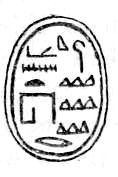
Anat-her may have been the first ruler of the Sixteenth Dynasty of Egypt, reigning over some part of Lower Egypt during the Second Intermediate Period as a vassal of the Hyksos kings of the 15th Dynasty. This is contested however, with the egyptologists Kim Ryholt and Darrel Baker believing that 'Anat-Har was a Canaanite chieftain contemporary with the powerful 12th Dynasty. Others such as Nicholas Geoffrey Lempriere Hammond contend that he was a prince of the 15th Dynasty. 'Anat-Har's name means "Anat is content" and refers to the Semitic goddess Anat, showing that he was of Canaanite descent.

Semqen was a Hyksos ruler of Lower Egypt during the Second Intermediate Period in the mid-17th century BC. According to Jürgen von Beckerath he was the third king of the 16th Dynasty and a vassal of the Hyksos kings of the 15th Dynasty. This opinion was shared by William C. Hayes and Wolfgang Helck but recently rejected by Kim Ryholt. In his 1997 study of the Second Intermediate Period, Ryholt argues that the kings of the 16th Dynasty ruled an independent Theban realm c. 1650–1580 BC. Consequently, Ryholt sees Semqen as an early Hyksos king of the 15th Dynasty, perhaps its first ruler. This analysis has convinced some Egyptologists, such as Darrell Baker and Janine Bourriau, but not others including Stephen Quirke.

Maaibre Sheshi was a ruler of areas of Egypt during the Second Intermediate Period. The dynasty, chronological position, duration and extent of his reign are uncertain and subject to ongoing debate. The difficulty of identification is mirrored by problems in determining events from the end of the Middle Kingdom to the arrival of the Hyksos in Egypt. Nonetheless, Sheshi is, in terms of the number of artifacts attributed to him, the best-attested king of the period spanning the end of the Middle Kingdom and the Second Intermediate period; roughly from c. 1800 BC until 1550 BC. Hundreds of scaraboid seals bearing his name have been found throughout Canaan, Egypt, Nubia, and as far away as Carthage, where some were still in use 1,500 years after his death.

Sehetepibre Sewesekhtawy was an Egyptian pharaoh of the 13th Dynasty during the early Second Intermediate Period, possibly the fifth or tenth king of the Dynasty.

Nehesy Aasehre (Nehesi) was a ruler of Lower Egypt during the fragmented Second Intermediate Period. He is placed by most scholars into the early 14th Dynasty, as either the second or the sixth pharaoh of this dynasty. As such he is considered to have reigned for a short time c. 1705 BC and would have ruled from Avaris over the eastern Nile Delta. Recent evidence makes it possible that a second person with this name, a son of a Hyksos king, lived at a slightly later time during the late 15th Dynasty c. 1580 BC. It is possible that most of the artefacts attributed to the king Nehesy mentioned in the Turin canon, in fact belong to this Hyksos prince.
Iufni was an ancient Egyptian pharaoh of the 13th Dynasty during the Second Intermediate Period. According to the egyptologists Kim Ryholt and Darrell Baker he was the 7th king of the dynasty, while Jürgen von Beckerath and Detlef Franke see him as the 6th ruler. Iufni reigned from Memphis for a very short time c. 1788 BC or 1741 BC.

Khahotepre Sobekhotep VI was an Egyptian king of the 13th Dynasty during the Second Intermediate Period. According to Egyptologist Kim Ryholt he was the thirty-first pharaoh of the dynasty, while Darrell Baker believes instead that he was its thirtieth ruler. Alternatively, Jürgen von Beckerath and Detlef Franke see him as the twenty-fifth king of the dynasty.
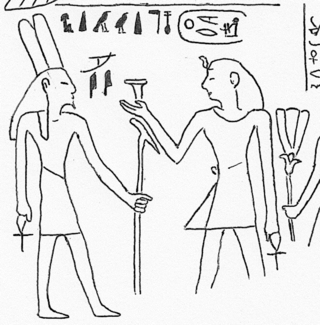
Merdjefare was an ancient Egyptian pharaoh of the 14th Dynasty of Egypt during the Second Intermediate Period c. 1700 BC. As a king of the 14th Dynasty, Merdjefare would have reigned from Avaris over the eastern Nile Delta and possibly over the western Delta as well.

Seankhenre Mentuhotepi was an ancient Egyptian pharaoh during the fragmented Second Intermediate Period. According to egyptologists Kim Ryholt and Darrell Baker, he was the fifth king of the 16th Dynasty reigning over the Theban region in Upper Egypt. Alternatively, Jürgen von Beckerath sees him as the fifth king of the 17th Dynasty.
Merkawre Sobekhotep was the thirty-seventh pharaoh of the Thirteenth Dynasty of Egypt during the Second Intermediate Period.
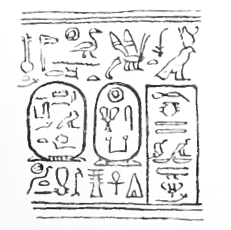
Mehibtawy Sekhemkare Amenemhat Sonbef was an Egyptian pharaoh of the 13th Dynasty during the Second Intermediate Period. According to Egyptologists Kim Ryholt, Jürgen von Beckerath and Darrell Baker, he was the second king of the dynasty, reigning from 1800 BC until 1796 BC.
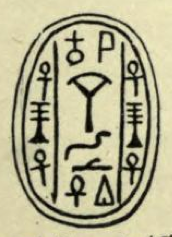
Wazad was an Egyptian pharaoh during the Second Intermediate Period. According to the Egyptologists Kim Ryholt and Darrell Baker, Wazad was a member of the 14th Dynasty of Egypt reigning c. 1700 BC. As a king of the 14th Dynasty, he would have reigned from Avaris over the eastern Nile Delta and possibly over the western Delta as well. The Memphis-based 13th Dynasty reigned over Middle and Upper Egypt at the same time. Alternatively, according to Jürgen von Beckerath and Wolfgang Helck, Wazad was a ruler of the 16th Dynasty and a vassal of the Hyksos 15th Dynasty. This view is debated in Egyptology, in particular because Ryholt and others have argued that the 16th Dynasty was an independent Theban kingdom rather than a vassal dynasty of the Hyksos.
Sewadjkare III was an Egyptian pharaoh of the Fourteenth Dynasty of Egypt during the Second Intermediate Period c. 1700 BC. As a king of the 14th Dynasty, Sewadjkare III would have reigned from Avaris over the eastern Nile Delta and possibly over the western Delta as well.

Merkheperre was an Egyptian pharaoh of the late 13th Dynasty of Egypt during the Second Intermediate Period reigning some time between 1663 BC and 1649 BC. As such, Merkheperre would have reigned either over Upper Egypt from Thebes or over Middle and Upper Egypt from Memphis. At the time, the Eastern Nile Delta was under the domination of the 14th Dynasty.
Merkare was an Egyptian pharaoh of the late 13th Dynasty of Egypt during the Second Intermediate Period reigning for a short while, some time between 1663 BC and 1649 BC.

Sekheperenre was an Egyptian pharaoh of the 14th Dynasty of Egypt during the Second Intermediate Period. According to the Egyptologists Kim Ryholt and Darrell Baker, Sekheperenre was the twenty-second king of the dynasty; alternatively, Jürgen von Beckerath sees him as the seventeenth ruler. As a king of the 14th Dynasty, Sekheperenre would have reigned from Avaris over the eastern Nile Delta and possibly over the western Delta as well.
Sehebre was a ruler of the Fourteenth Dynasty of Egypt, ruling for three to four years around 1700 BC during the Second Intermediate Period. According to Egyptologists Kim Ryholt, Jürgen von Beckerath, and Darrell Baker, he was the fifth king of the dynasty. As such he would have ruled over the eastern Nile Delta – and possibly over the western Delta as well – from his capital at Avaris.
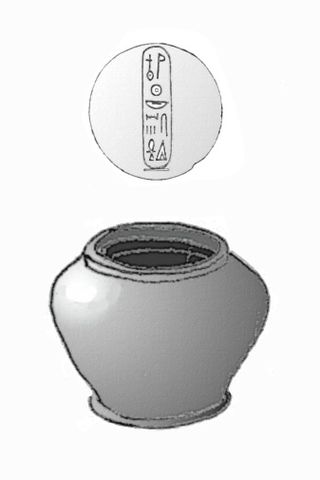
Nebsenre was an Egyptian pharaoh of the 14th Dynasty of Egypt during the Second Intermediate Period. Nebsenre reigned for a least five months over the Eastern and possibly Western Nile Delta, some time during the first half of the 17th century BCE. As such Nebsenre was a contemporary of the Memphis based 13th Dynasty.















